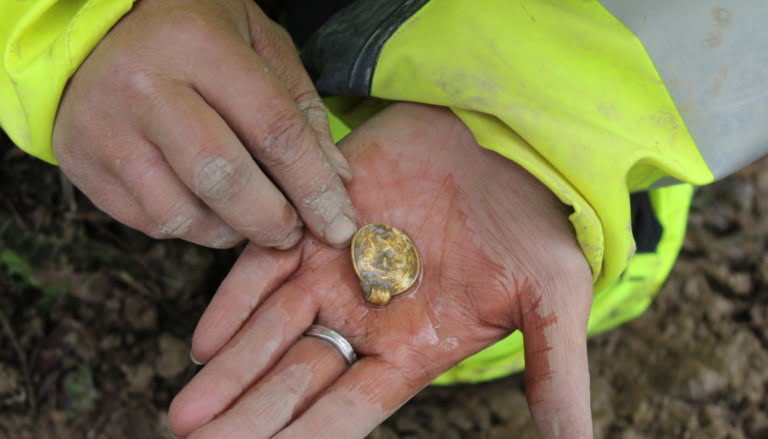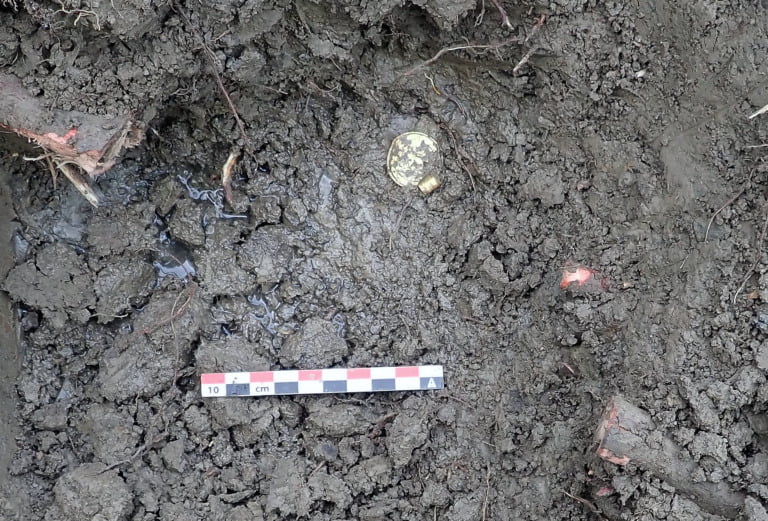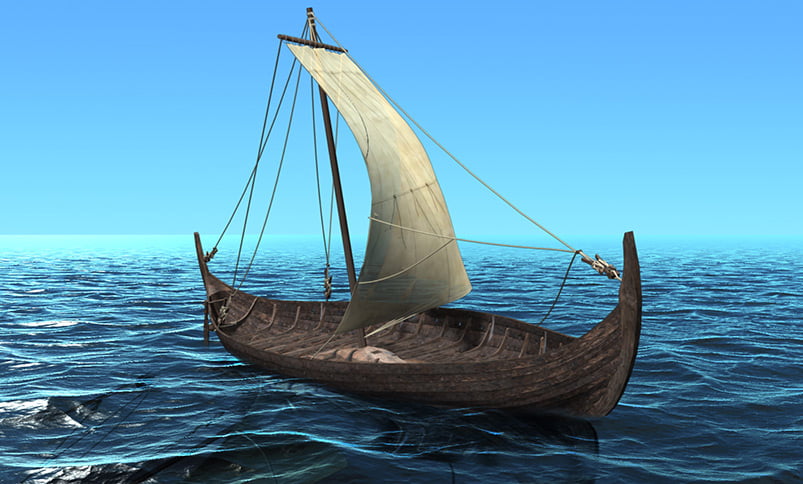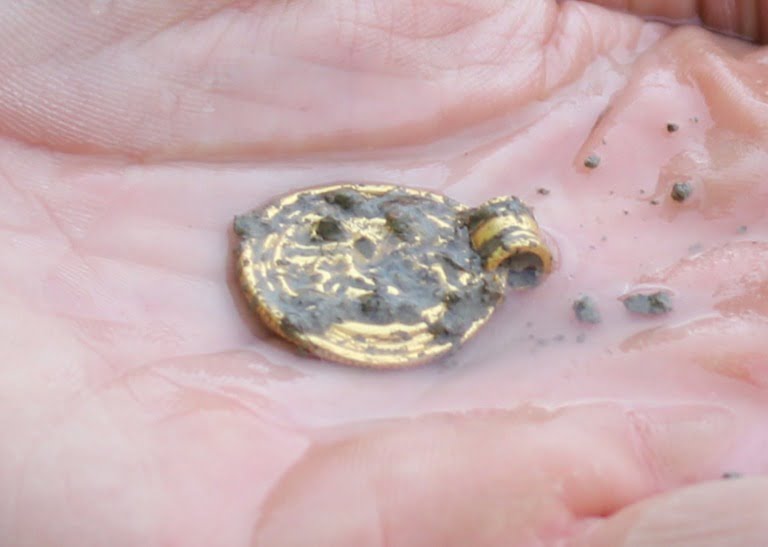The seven gold pendants were found in a field in Østfold. They are believed to have been buried as part of a sacrificial act in the 6th century.
Seven gold pendants, known as bracteates, have been discovered in south-east Norway. Archaeologists say it's an “incredibly rare” votive hoard, unlike anything seen in about 70 years.

A bracteate is a flat, thin, single-sided gold medal worn as jewellrey that was produced in Northern Europe predominantly during the ‘Migration Period' of the Germanic Iron Age, between the 4th and 6th century.
These thin gold pendants were based on Roman medallions and worn as jewellery. But instead of Roman detail, these featured Norse-inspired imagery including Norse gods and animal figures.
An offering to the Gods—from the wealthy
Archaeologists say they are sure the coins were part of a lavish offering, or sacrifice, to the gods. They have been dated to the 6th century, a few hundred years before the beginning of the Viking Age.
Only people with high status and wealth would have been able to afford such a rich sacrifice. “There is little doubt that these were items connected to aristocratic communities within a Germanic elite in Scandinavia,” said the team of archaeologists in a recent blog post on Science Norway.

The three archaeologists leading the project are Jessica Leigh McGraw, Margrete Figenschou Simonsen, and Magne Samdal, all from the University of Oslo Museum of Cultural History.
Read more: Archaeologists Discover ‘Amazing’ Iron Age Grave In Lofoten
Remarkable condition
The pendants are in remarkable condition considering they've spent more than a thousand years in clay soil. That's because gold doesn’t deteriorate. They are however quite fragile. The purity of the gold is high, which makes it soft and easy to bend.
Travel and trade before the Vikings
The Viking Age is known as one of trade and exploration, but the truth is that Scandinavians had been travelling for many centuries before.

Norway has rich archaeological evidence dating back to this period, found in farms, graves and hill forts. Items imported items from the Roman Empire and copies of antique status symbols prove that Norway had cultural and economic ties to the rest of Europe.
This is also evident in the gold bracteates, according to the researchers: “There is little doubt that these were items connected to aristocratic communities within a Germanic elite in Scandinavia.”
Two types of pendant
Bracteates are classified according to what they depict. The impressive Østfold hoard featured both C-type and D-type pendants.
C-type bracteates show a large person with defined hair riding on the back of a horse, often in combination with birds and symbols from Norse mythology. This is most often interpreted as a representation of the Norse god Odin.

D-type bracteates appeared later in the 6th century C.E. and depict stylized animals.
Some research questions remain
While the team of researchers and archaeologists are confident in the dating, they aren't sure whether the hoard was buried before or after the so-called Fimbul winter.
This was a period from 536 to 540 when volcanic eruptions sent ash into the sky. Sunlight barely made it through to the surface for over a year, causing crop failures and mass starvations.
Read more: Sensational Find of Pagan Temple Remains in Norway
However, the team say that ritual gold sacrifices do appear to have increased during the 6th century: “The Gods needed pleasing. In a time of bad years and insecurities, people may have felt a heightened need to try and avoid dangers and seek protection.”
Work on studying the hoard continues.

